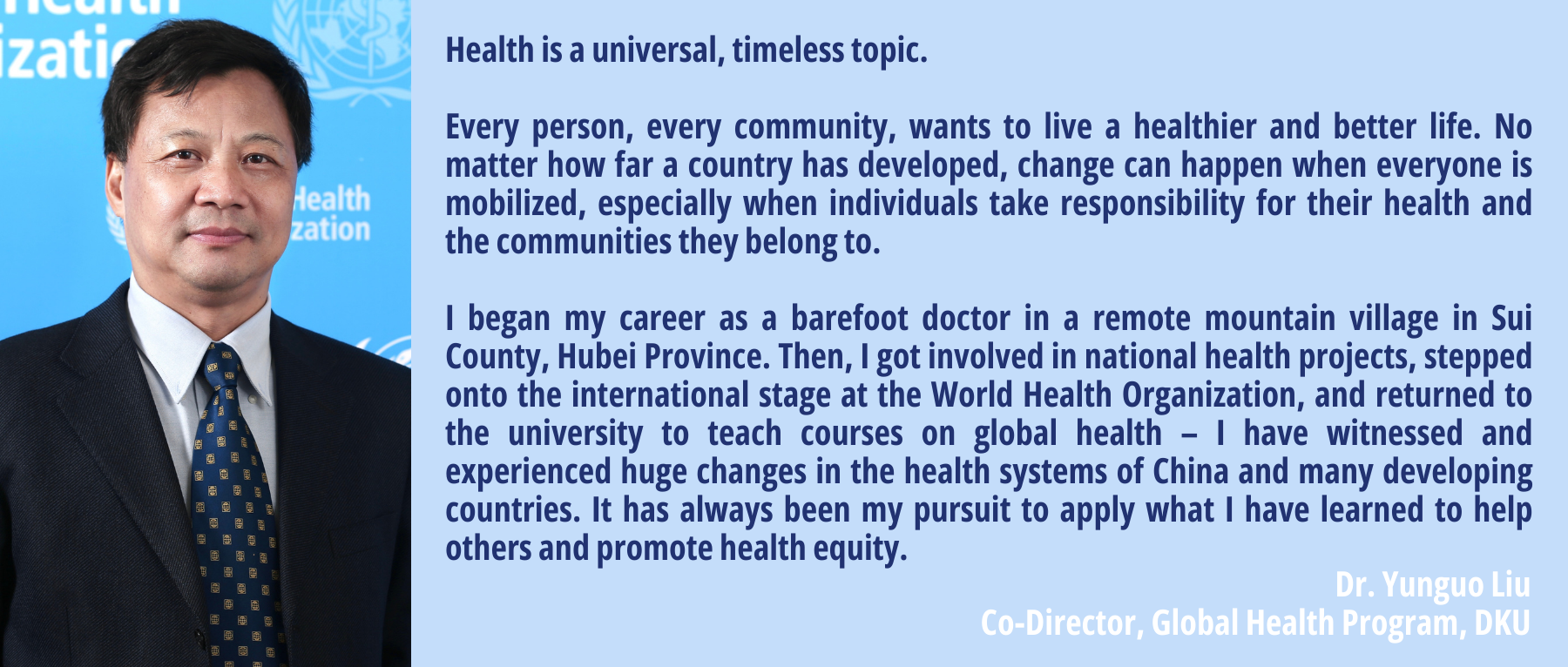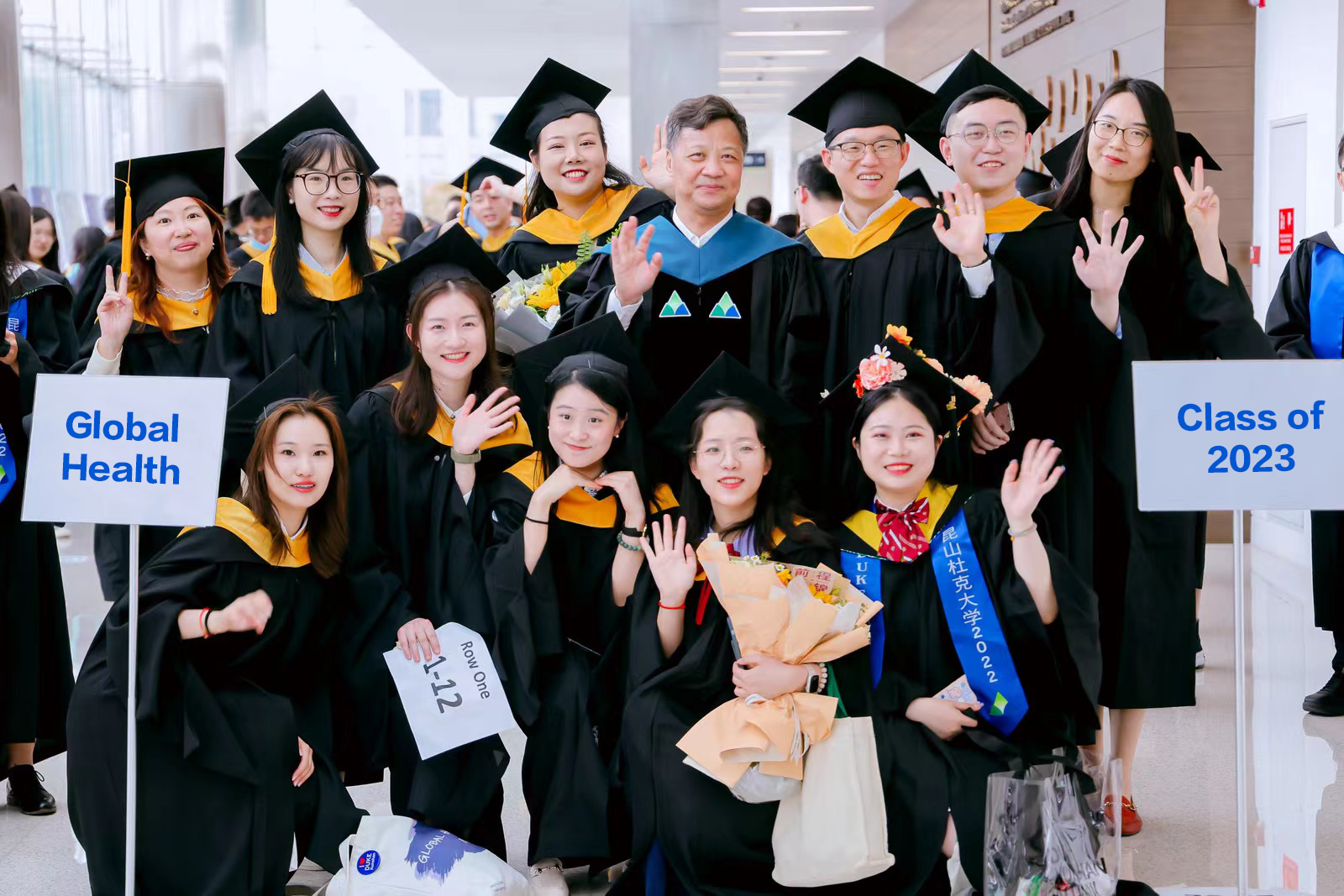
My hometown is the Sui County of Hubei Province. The mountainous area blocked convenient transportation to cities. Thus, the biggest problem was the lack of medicine and medical care. I saw with my own eyes that many children lost their lives because of measles, and polio was very common, too.
In 1974, after I graduated from high school, I was selected by the Red Star Brigade of Xinyang Commune to participate in health training, with half a year of introductory courses and half a year of internship in a health center. After one year of study, along with three other doctors, I took on the health care of 11 villages (then called production squads).
Except for the doctor in charge of the pharmacy, the other took turns seeing villagers outside. We have several tasks. The first was disease prevention, including the implementation of immunization programs. For example, we were required to send the oral polio vaccine to every household and ensure every child ate it. The “two controls and five improvements ” (clean water control, dung control, wells improvement, toilet improvement, cattle housing improvement, stoves improvement, environment improvement) was another implementation that aimed to upgrade the villagers’ living environment and sanitation.
The second is to deal with minor injuries and illnesses. Sometimes, when I went out to see patients in the middle of the night, I had to go back alone in the dark with a torch. On the mountainous road, I could hear the howling of wolves and leopards. If the patient was seriously ill, I had to arrange a tractor and send the patient to the township health center. As the village doctor, I must accompany the patient to the hospital for the handover.
The third task is to find and prepare medicinal herbs. Due to a lack of medication, we had to use local herbs to treat illnesses, which was a heavy task. On top of that, we had to participate in agricultural labor for at least 120 days a year. I also participated in the construction of the new health center, including building the house and cutting down the trees, all done by ourselves under the leadership of the hospital director.
The barefoot doctor system was the prototype of primary health care in China. It used the simplest and lowest-cost methods to address challenges in resource-limited rural areas and did its best to popularize preventive healthcare services. The experience in primary care has deepened my understanding of healthcare in rural areas, which paved the way for my participation in the design and implementation of rural healthcare programs later in my career.
After China resumed the college entrance exam in 1978, I was admitted to the Wuhan Medical College. After graduating with my PhD from the medical department, I was assigned to a position in the Department of Maternity and Childhood in the Ministry of Health[1]. Because I did not have a background in public health, I applied for a Master of Public Health at the University of California Berkeley in 1993 to equip myself with the relevant knowledge. Upon my return to China, I was transferred to the Foreign Loan Office of the Ministry of Health, where I was involved in one of the earliest international collaborative programs in global health.
In the 1990s, the healthcare landscape in China had changed dramatically, but state investment was still insufficient. China set up a special Rural Health Project with a World Bank loan to improve the health of the population in poor areas and narrow the disparities compared with the developed region. This project was designed in 1998 and completed in 2007, and it is one of the projects I have been involved in for the longest period.
[1] Notes: Before 1995, undergraduate and postgraduate students in China were allocated with specific job positions upon their graduation.

Under the leadership of the Ministry of Health, the Ministry of Finance, and the State Planning Commission, the project team worked with World Bank officers and did a lot of investigation and research for the project design. The international experts and our domestic experts worked closely together to move things forward. At that time, because of the marketization of the healthcare sector, many township health centers were sold, privatized, or partially contracted out. The project was trying to rebuild and strengthen the health system in the rural areas, revive cooperative medical care, and set up the basic health security system. When I was a barefoot doctor, cooperative medical care was rooted in the collective economy. However, after the dissolution of the people’s commune, we had to explore the responsibility and obligation that the government had to take in managing the health care and health security system under the condition of a market-driven economy. The pilots carried out under this project set the prototype and foundation of today’s new rural cooperative medical system. However, the poorest population still could not afford the cooperative medical care enrollment fee, which was around 10 yuan per person. Therefore, we worked with the Ministry of Civil Affairs to establish the earliest medical assistance program, which has since evolved into a nationwide policy.

The program also designed a three-tiered county and village health care system with a clear delineation of responsibilities. The project also set service standards and a list of essential medicines. It established mutual referral and service evaluation systems, including reducing and preventing antibiotic abuse and upper-level supervision and support for lower-level health care. In addition to this, the project has introduced innovative practices, such as promoting passive solar health centers in Qinghai, Shanxi, and Gansu, helping health centers in pastoral areas of Qinghai to utilize photovoltaic power supply, and experimenting with geothermal heat utilization in health centers in Henan to keep the temperature of the hospitals constant. Using local resources saved money. It seems banal now, but it was a big breakthrough back then.

The “China Basic Health Services Program” was the only health project among the 10 that won the World Bank’s 1998 Best Project Design Award. It brought together the wisdom and enthusiasm of domestic and foreign experts, officials from governmental units at all levels, primary health care workers, and villagers, and extensively drew international experiences from the World Bank. In 2019, when I traveled to Gansu in the company of visitors from the World Bank and the U.K.’s Department for International Development (DFID), and domestic and foreign experts who had been involved in the project, I dropped by one of the health centers which were involved previously in the project. They told us that the local health department was still using the health services supervision manual designed by the project.
Each country has its strengths and faces different health challenges. Some problems are common, and some are unique to the local context. As for Global Health, I have always believed that exchanges and cooperation are the only way to promote advancement in health.
When designing a medical assistance program for people experiencing poverty, we do not have any mature precedents to refer to. Therefore, not only did we look at the path taken by developed countries, but we also learned from the experience of our developing counterparts. A “30 baht” (equivalent to RMB 5.9) program was designed for people experiencing poverty in Thailand. By paying a small amount, the beneficiaries could enjoy a basic health service package, which served as a reference for the subsequent basic public health service package in China.
We initially designed 12 cost-effective health interventions in the project, such as maternal and child health care, rural cataract surgery, immunization planning, iodized salt, and school-based parasitic disease control. Each county followed its health plan and chose three interventions best suited to the local context. The project provided the funding, and implementations have relied on locals.
By around 2007, with the socio-economic development, China’s health care had improved dramatically. China was soon to graduate from the World Bank, meaning it could no longer be eligible for low-interest loans. I then joined the World Health Organization, not only to introduce China’s experience to the world but also to help more developing countries improve healthcare conditions and benefit more people.

Improving health care depends not entirely on highly sophisticated technology and tertiary hospitals. The people-centered approach and empowerment of individuals are essential, too. Perhaps due to my barefoot doctor experiences, I am passionate about primary health care. I firmly believe that no matter how developed the country is, the most effective way is to mobilize everyone, every family, and every community and bring into play the local experiences. For example, preventing and treating non-communicable diseases require individual responsibility in self-care and easy access to health care. Thus, we need to build a health-friendly community and environment.

There are many best practices across different countries, but translating theories into concrete measures fit for locals requires innovative ideas from local people, communities, and government. As the WHO country representative in Laos, I collaborated with local government and communities. I made the best possible interventions with the least resources by inviting village chiefs and female villagers to participate in maternal and child healthcare initiatives with the healthcare workers.
I joined Duke Kunshan University in 2021. In addition to my administrative duties, I teach a Global Health Program Design and Evaluation course. This is a new way of engaging with global health.
We need young people with a global perspective, understanding diverse cultures, and translating theory into practice to set a new era for global health. We hope that students will not just attend classes, take exams, and gain a diploma, but will be able to connect to and solve real-world challenges, through which they can make progress and benefit from the experiences.

DKU’s global health program has also received support from many generous donors. These donors encourage students to actively participate in global health governance by providing financial support for students’ internships in international organizations.
Health resources have always been limited, and making better use of and efficiently utilizing them is a common challenge for all health systems. After the pandemic, disparities in health deteriorated. Progress on several UN Sustainable Development Goals (SDGs) has stagnated or even regressed. At this time, cross-country collaboration to address health challenges is even more relevant and urgent. It requires the joint efforts of all stakeholders and the power of the younger generation to improve health outcomes further and promote health equity.

© 2024 Duke Kunshan University 苏ICP备16021093号